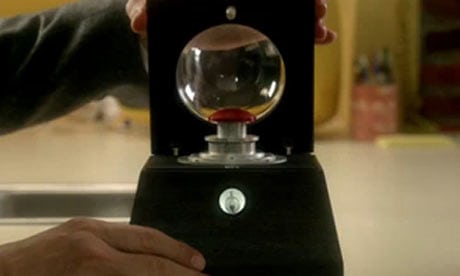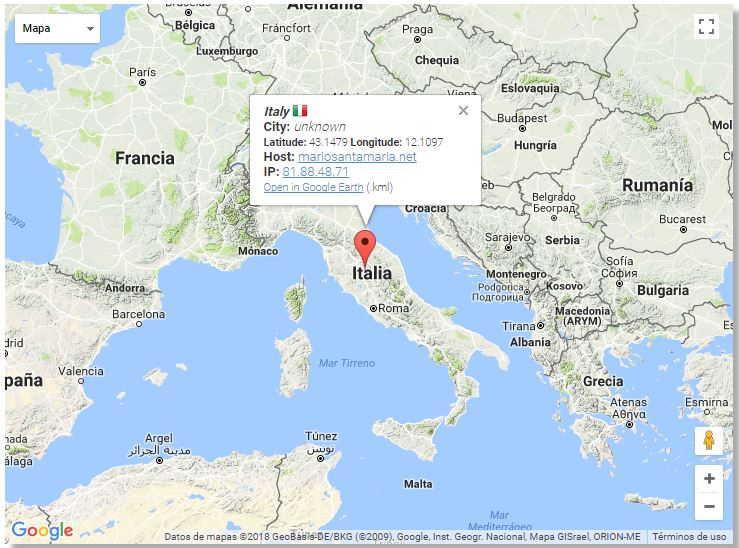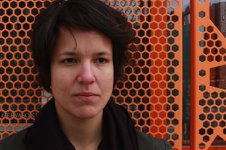Search
To search for an exact match, type the word or phrase you want in quotation marks.
A*DESK has been offering since 2002 contents about criticism and contemporary art. A*DESK has become consolidated thanks to all those who have believed in the project, all those who have followed us, debating, participating and collaborating. Many people have collaborated with A*DESK, and continue to do so. Their efforts, knowledge and belief in the project are what make it grow internationally. At A*DESK we have also generated work for over one hundred professionals in culture, from small collaborations with reviews and classes, to more prolonged and intense collaborations.
At A*DESK we believe in the need for free and universal access to culture and knowledge. We want to carry on being independent, remaining open to more ideas and opinions. If you believe in A*DESK, we need your backing to be able to continue. You can now participate in the project by supporting it. You can choose how much you want to contribute to the project.
You can decide how much you want to bring to the project.

Archives in the Digital Age >>>
The traditional way of understanding the archive as a physical complex that treasures and stores data, secrets or facts will continue to exist in many national, official, military and museum spheres. There are subjects that interest me in this area, but I must admit that ever since I immersed myself in the study of such a vast field, the windows that I found most intriguing were those concerning access to the information in digital archives, a change in the paradigms of the space that contains the documents and in the way of assuming that archives are ephemeral, temporary and multimodal, as dynamic as culture. What gives them meaning has more connections with the fluctuation order of the present than with protection for eternity.
The theoreticians who have questioned and defined the archive from the context of the digital boom agree that the former doesn’t contain the past but a sum of digits; that it is synchronised with the present and acts as a generator of collective memories. Media archaeologists are precisely those who suggest that the traditional archive should be deconstructed through digital techniques: the transformation is related to bytes, to the way in which information is transmitted and circulates. The physical archive, that, according to Michel Foucault is a system of rules and laws, was not interactive, while documents on the Net are critical of the possibility users have of reorganising them. Theoretician and media archaeologist Wolfang Ernst illustrates this scenario as follows: the archive is a storage agency in a spatial building; it doesn’t deal with memory but with practices with coded storage. In this sense, the huge challenge that I face when tackling this subject is breaking my own analogical framework.
I suppose that those who, like me, are not digital natives will find an echo of their concerns regarding the transformation of the different archives in the age of the Internet.
Apocalypse or, Beyond Storage >>>
Let’s imagine that one of the powerful men pressed the red button. Let’s imagine that those who survived the catastrophe then found black boxes with encrypted data, codes that were incomprehensible and undecipherable for those who had had no training in advanced mathematics or programming. The few experts in decoding, who spent a few days contemplating what would be the treasure of a future age, began to refer to the finding as ‘archives’ — containers that enable data storage; anything else are interpretations that come from outside, from ourselves. Ways of exchanging knowledge that are not neutral, that are charged with ideologies, labels, with multiple approaches … And yet they also acknowledged that secondary accounts, reading and manipulation are what give value to the bytes that enlarge trouble archives. Hence the importance of activating stored contents. Otherwise, archives are reduced to mere accumulations.
Accesses >>> Physical {Spatial} Paths vs. Virtual {Temporary} Paths
So far I’ve spoken of digital archives on the Net and of the need to cross data with interpretations in order to activate them, and artist Mario Santamaría is a good colleague in this charting of information. His artistic practice is based on watching the Net to identify work materials in this great repository of virtual space. Asked whether he considered the Internet as a huge archive, he said he regarded it more as a huge index of subjects. In the event of having to think of it as an archive, he felt that it is only readable in algorithms. Mario Santamaría considers the Net as a sculptural field of spatial relations between different objects.
In his project entitled Travel to My Website, he asks himself how data can travel from one place to another and addresses the ups and downs of all that is contained on his website. He evokes a virtual context and crosses it physically in order to perform what he defines as ‘an operation to identify data traffic on the Internet”. When we visit a website in actual fact it is the website that visits us, because images travel and are downloaded on our browser. Following this logic, Mario Santamaría decided to travel the path that took him to his website server. In order to discover where his archives were stored, he made the same physical journey as the one made by the data: from Switzerland to Stockholm, from Stockholm to Milan, from Milan to Perugia and from there, to Bergamo.

The artist evinces something that is so obvious that it usually goes unnoticed. The idea is that the information we upload to the Internet, and share and store … and which we think defines our database, our private and even our collective archives, doesn’t make us the owners of our memory. On the contrary, just as websites visit us, the Internet places we trust and where we store our data are archiving us through our documents, locations, photos, etc. The compulsive gesture of accumulating information digitally is converting us into geolocalised data of very easy access. The false idea that we can possess everything without the need for physical space is transforming us into victims of old, analogous control mechanisms that have found new forms of action on the Net.
If I began this text with the displacement of the concept of archive – admitting the immateriality of what Wolfang Ernst calls ‘the spatial architecture in which data travels’ – I shall conclude on a note concerning our complex relationship with digital media, the coded storage of our data (micro archives) and the deliberate movements we make on the Imago Mundi of the Net — that virtual sphere that defies what we understand as an archive.
Postdate: To hear Mario Santamaría, I recommend the post titled ‘Arte, internet y viejos medios’, that can be found on YouTube, that huge store:

An incurable onlooker, Aymara Arreaza R. uses walking around, reading, the criticism of displacement and questioning as her working tools. She is a hybrid of trades: expressing herself through writing, some of her own images, teaching as well as research projects that she backs up with the construction of more personal geographies. Since 2011 she directs www.rutadeautor.com
"A desk is a dangerous place from which to watch the world" (John Le Carré)